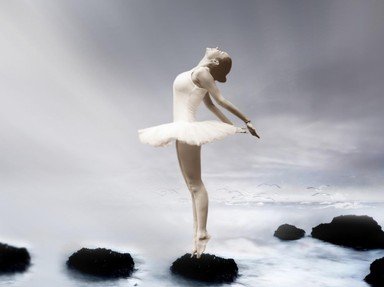Quiz Answer Key and Fun Facts
1. True or False - Fred Astaire and Ginger Rogers were the top billed actors in "Flying Down To Rio", their first screen appearance together.
2. "The Gay Divorcee" was the first starring vehicle for Fred Astaire and Ginger Rogers, with Rogers playing the eponymous divorcee of the title. Their first major dance routine in the film is to a song by which composer(s)?
3. In "Roberta", Ginger Rogers plays the character of Countess Scharwenka, a somewhat difficult Polish customer at the eponymous fashion house of the title. However, this identity is revealed to be fake, as she is revealed to be from which US state?
4. True or False - "Top Hat" was the first Astaire / Rogers musical with songs written by Irving Berlin
5. "Follow the Fleet", Astaire and Rogers' fifth outing together, saw them feature for a second time alongside which actor?
6. In "Swing Time", Fred Astaire performs one of him most memorable solo routines, in a sequence requiring significant optical effects. What was the result of the effects work?
7. In "Shall We Dance", the final big production number at the end of the film includes a ten minute ballet sequence featuring which American ballerina?
8. Following the release of "Shall We Dance", Astaire and Rogers sought a break from their partnership. While Rogers appeared in the acclaimed straight drama "Stage Door" alongside Katharine Hepburn, Astaire made the musical "A Damsel In Distress". Although English actress Joan Fontaine was his leading lady, which comedy act were his major co-stars?
9. "Carefree", the eighth film that Astaire and Rogers made together, marked a change for Astaire, as he played a member of which profession?
10. "The Story of Vernon and Irene Castle" is the only biopic that Astaire and Rogers made together, and the only one with a tragic ending, as a result of Vernon's service in which branch of the British Army?
Source: Author
Red_John
This quiz was reviewed by FunTrivia editor
skunkee before going online.
Any errors found in FunTrivia content are routinely corrected through our feedback system.
